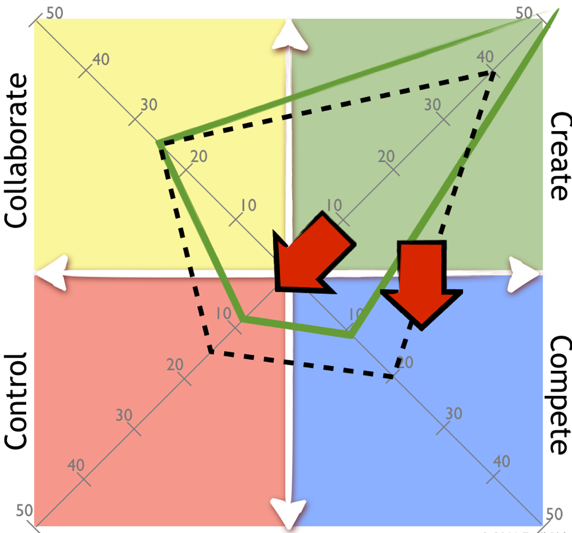
We Need Structure!
Many participants in our workshops are aghast when we share with them that some organizations require more structure and control to improve their effectiveness. Believe it or not, there are some over-creative organizations. This is a story of one of them.

What? Over-Creative?
Yes, it is true that we have worked with a few organization that call into this category. Some people are envious. Others recognize the pattern. If you have every worked at a startup, you might have felt a culture similar to this. Everything is new. New team. New technology. New product. New process. And this works for some time, when the team is small. Everyone plays the hero role and gets stuff done. There are so few people that everyone knows what is going on. Until it grows.
Adding control can be healthy!
In these situations, adding control is healthy. But what does this mean and how do we do it? Here are some examples…
- Team Definition – Many over-creative cultures have a fast and loose definition of team and people. Everyone does everything. And while this works with a single team less than 8. It breaks beyond that. Adding team boundaries, focus, backlogs, and co-location creates a renewed synergy.
- Two-Week Rhythm – The two-week (or one or three) Sprint cycle is another amazing structure that adds control. Simply by putting this project structure in place provides focus, accountability, predictability, and speed of execution.
- Definition of Done – Another healthy control structure is the definition of done. I believe there are enough other web-resources out there to help you understand this one. Google it.
- Quarter-Goal Rhythm – Likely more important than the two-week rhythm is the quarterly goal rhythm. Again, creating accountability to the business is too myopic in a two-week cycle. Team members and business leaders stay in the weeds. The quarterly business rhythm provides additional control and clear prioritization decisions. Google uses OKRs. Salesforce uses a V2MOM. SAFe uses a Release Train. These are all similar patterns to the Quarterly Goal Rhythm.
